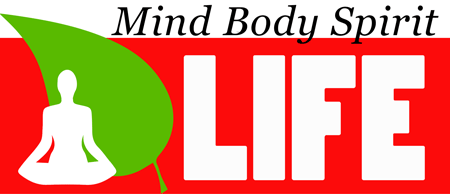How Trauma is Stored in the Body and 8 Natural Ways to Release It

Trauma, whether physical, emotional, or psychological, has a profound impact on the body. In recent years, more research has surfaced showing that the body retains the imprint of traumatic experiences, often in subtle and unseen ways. These stored emotional memories can manifest in physical symptoms, leading to a variety of health concerns, including chronic pain, anxiety, depression, and other conditions. The fascinating connection between the mind and the body has led many to explore how trauma is stored and, more importantly, how to release it naturally.
Understanding How Trauma is Stored in the Body
The concept of trauma being stored in the body is rooted in the idea that the body is a vessel for our experiences. When we go through stressful or traumatic events, the brain and nervous system respond by activating the body’s fight-or-flight mechanism. This response is adaptive and is meant to protect us in dangerous situations. However, if the trauma is unresolved, the body may hold onto the experience.
The Role of the Nervous System
The nervous system plays a critical role in how trauma is stored. When a person experiences trauma, the sympathetic nervous system (SNS) activates, triggering a fight-or-flight response. In cases of intense trauma, the parasympathetic nervous system (PNS), which is responsible for calming the body, may not adequately “reset” the system. This leads to a state of hyperarousal, where the body remains on high alert long after the traumatic event has passed.
The prolonged activation of the nervous system leads to the formation of unconscious, stored memories in the body, a phenomenon that is often called “somatic memory.” Over time, this chronic stress response can lead to the development of physical symptoms like muscle tension, headaches, digestive problems, or more severe conditions like fibromyalgia, autoimmune diseases, or chronic fatigue.
The Brain-Body Connection
Research has shown that the brain’s emotional center, the amygdala, works in tandem with the body to store traumatic memories. When an individual experiences trauma, these memories are not always processed or fully integrated by the brain, leaving them stored in the subconscious mind. The body’s response to these unprocessed memories can result in ongoing physical and emotional tension.
Even after the external stressor has ended, the body may continue to react as though it is still under threat. The trauma is not just an event of the past but something that is continually re-lived in the form of physical sensations, emotional reactions, and certain behaviors.
Natural Ways to Release Trauma Stored in the Body
Given the strong mind-body connection, it is crucial to approach trauma release in a holistic manner. There are numerous natural ways to help release trauma from the body. These techniques focus on balancing the nervous system, addressing emotional blockages, and re-establishing a sense of safety in the body.
- Somatic Experiencing (SE)
Somatic Experiencing is a therapeutic method developed by Dr. Peter Levine, which focuses on the body’s sensations as a pathway to healing trauma. SE works by helping the individual tune into their physical sensations and release trapped energy from traumatic experiences. By allowing the body to complete the physiological responses that were interrupted during the trauma (such as shaking, crying, or running), the nervous system can restore itself to a more balanced state.
- Breathwork
Breathing exercises are a powerful tool for releasing stored trauma. Conscious breathing helps activate the parasympathetic nervous system, which encourages the body to relax and release tension. Techniques such as deep diaphragmatic breathing, box breathing, and circular breathing can help regulate the nervous system, release held emotions, and restore equilibrium. Breathwork has been shown to reduce stress and anxiety and is a great way to break the cycle of trauma responses.
- Yoga and Movement Therapy
Yoga is one of the most effective methods for addressing trauma stored in the body. Many trauma survivors experience dissociation or a sense of being disconnected from their bodies. Yoga and other movement therapies, such as dance or tai chi, provide a means of reconnecting with the body and cultivating mindfulness. By moving slowly through poses or exercises, the body is allowed to release pent-up energy and emotions, which helps to restore balance to both the mind and body.
Trauma-informed yoga, in particular, takes into consideration the impact of trauma on the nervous system and adapts practices to ensure safety and gentle guidance. These sessions often focus on grounding, self-awareness, and gentle stretching to promote emotional release.
- Massage and Bodywork
Massage therapy, particularly techniques like myofascial release, trigger point therapy, and deep tissue massage, can be effective in releasing tension stored in the muscles and tissues. Chronic stress, whether emotional or physical, can result in muscle tightness and pain that mimics the body’s stored trauma. Bodywork helps to promote relaxation, alleviate pain, and restore the flow of energy and circulation. Additionally, practices like acupuncture and acupressure focus on unblocking energy meridians to encourage healing.
- Meditation and Mindfulness
Meditation is a powerful way to release stored trauma, as it allows the individual to access a calm and centered space where they can process emotions. Mindfulness meditation teaches individuals to be present in the moment and observe their thoughts and feelings without judgment. This practice can help the individual develop awareness of the sensations, memories, and emotions stored in the body, and learn to release them with compassion.
Trauma survivors can also benefit from guided meditations specifically designed to release trauma. These may include visualizations, affirmations, or body scans to help individuals release deep-seated emotions and foster healing.
- Herbal and Nutritional Support
Certain herbs and supplements have been found to support the nervous system and alleviate symptoms of trauma, anxiety, and stress. Adaptogens, such as ashwagandha, rhodiola, and holy basil, help the body cope with stress and regulate cortisol levels. Magnesium, omega-3 fatty acids, and B vitamins are essential for nervous system function and can reduce the impact of trauma on physical health.
Herbal teas such as chamomile, lavender, and lemon balm can also support relaxation and help ease the body and mind during times of emotional intensity. A holistic approach to nutrition can help replenish depleted nutrients and restore the body’s natural ability to cope with stress.
- Sound Healing
Sound therapy is another holistic method for releasing stored trauma. Certain frequencies and vibrations can help to clear energetic blockages within the body and restore a sense of harmony. Instruments such as gongs, Tibetan singing bowls, or tuning forks are often used in sound healing practices. These vibrations can stimulate the body’s energy systems, facilitate the release of trauma, and create a deep sense of relaxation.
- Journaling and Expressive Writing
While not a physical practice, journaling is an effective way to process stored emotions and release trauma. Writing allows individuals to express their thoughts and feelings in a safe, private space. Expressive writing can serve as a tool for unpacking traumatic memories, reprocessing emotions, and gaining clarity. The act of putting pen to paper can help integrate unresolved experiences and promote emotional healing.
In closing, trauma is not just a mental or emotional experience; it is stored in the body, affecting both physical and emotional health. The good news is that there are many natural ways to release this trauma and restore the body’s innate healing capacity. Practices like somatic experiencing, yoga, breathwork, massage, and sound healing offer profound support in releasing stored trauma and achieving holistic wellness. By addressing the body as a whole, individuals can heal not only from the past but also reclaim their vitality, freedom, and inner peace.



